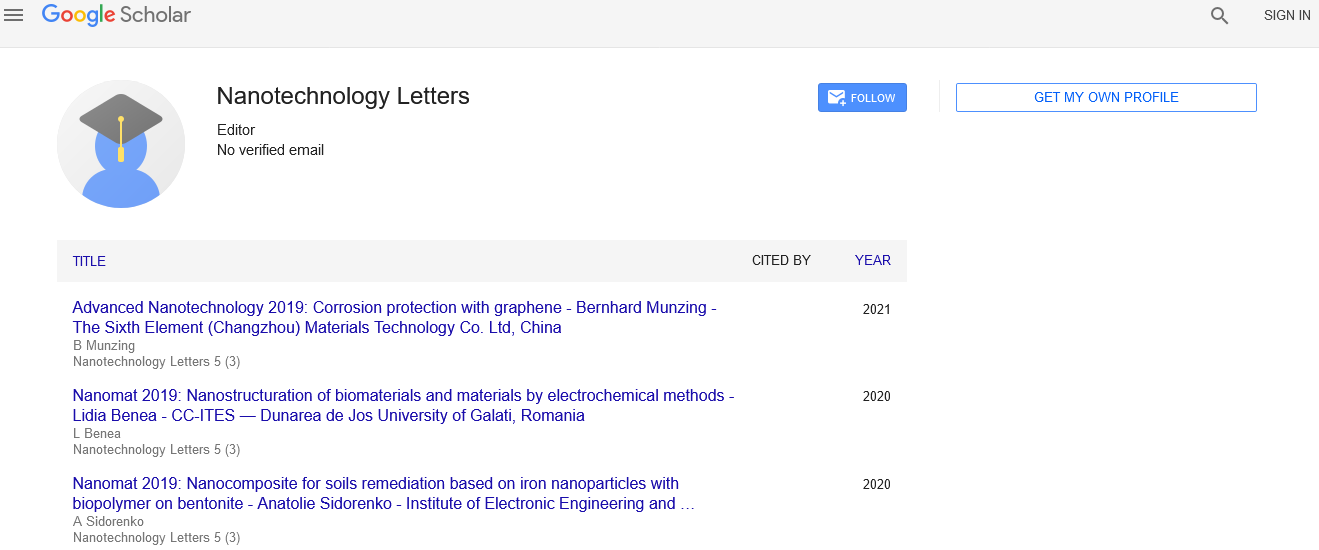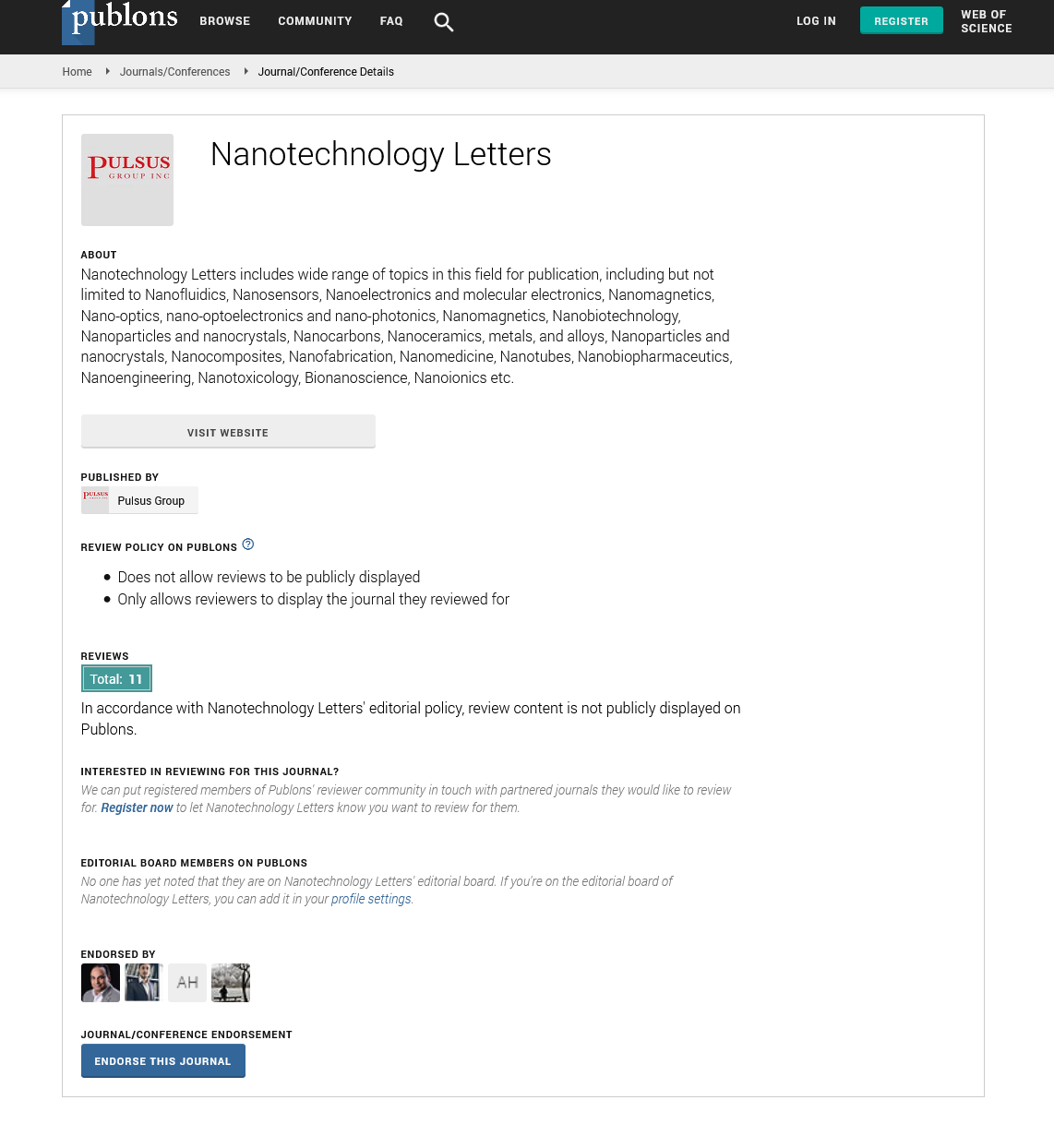Diagnosis and the cell specific therapy of nanomedicine
Received: 03-Sep-2021 Accepted Date: Sep 17, 2021; Published: 24-Sep-2021
Citation: Bartenstein P. Diagnosis and the cell specific therapy of nanomedicine. Nanotechnol Lett 2021;6(1): 3.
This open-access article is distributed under the terms of the Creative Commons Attribution Non-Commercial License (CC BY-NC) (http://creativecommons.org/licenses/by-nc/4.0/), which permits reuse, distribution and reproduction of the article, provided that the original work is properly cited and the reuse is restricted to noncommercial purposes. For commercial reuse, contact reprints@pulsus.com
Description
Nanomedicine may be a branch of drugs that applies the knowledge and tools of nanotechnology to the prevention and treatment of disease. In fact, Nanomedicine is invited by the Metchnikov and Ehrlich who got Nobel Prize for Medicine in 1908 is the modern pioneers of nanomedicine. Cellspecific diagnostic and therapy Nanomedicine involves the use of biocompatible nanoparticles such as and nanorobots, nanoscale materials, for diagnosis, delivery, sensing or actuation purposes in a living organism. Actually nanomedicine is that the application of nanotechnology for medical purposes has been termed nanomedicine and is defined because the use of nanomaterials for diagnosis, monitoring, control, prevention and treatment of diseases. Furthermore, the >400 nanomedicine formulations currently in clinical trials are expecting to bring novel clinical solutions e.g. platforms for macromolecule delivery, alone or together with other key enabling technologies to the market, including biotechnologies, advanced materials, biomaterials, microfluidics. The advantages of nanomedicine includes improved efficacy, bioavailability, targeting ability, dose-response, personalization, and safety compared to conventional medicines.
The ultimate goal of nanomedicine is to achieve the ability of withstand targeted delivery of complex assemblies that contain sufficient amount of multiple therapeutic and diagnostic agents for highly localized drug release with no adverse side effects and reliable detection of site-specific therapeutic response. Currently, in the United States, the national institute of health is evaluating several safety issues, including particle pathways in the human body; the length of time nanoparticles remain in the body; the consequences on cellular and tissue functions; access to circulation through dermal exposure; and unanticipated reactions in vivo. The first cancer nanomedicine approved by the US Food and Drug Administration was Doxil. Since 1995, it has been used to treat adult cancers including ovarian cancer, multiple myeloma and Kaposi’s sarcoma mean a rare cancer that often affects people with immune deficiency such as HIV and AIDS. The first medicine of nanomedicine was Doxil. In 1995, doxil, a circulating sustained-release liposomal Nano formulation of doxorubicin, became one of the first nanomedicines approved by the Food and drug administration.
It was first approved for the treatment of AIDS-related Kaposi's sarcoma and later for refractory ovarian cancer and multiple myeloma. The future of nanomedicine is increasingly being studied by scientists for different medicinal applications. These include more efficient drug delivery and targeting also as personalised nanomedicine where a drug is run to a patient supported their genetic profile.
Applications in nanomedicine
Nanomedicine is holding changes in clinical practice by the introduction of novel medicines for both diagnosis and treatment, having enabled to address unmet medical needs, by integrating effective molecules that otherwise couldn't be used due to their high toxicity for instance mepact ,exploiting multiple mechanisms of action for instance Nanomag, multifunctional gels, maximizing efficacy for instance by increasing bioavailability and reducing dose and toxicity, providing drug targeting, controlled and site specific release, favouring a preferential distribution within the body for example in areas with cancer lesions and improved transport across biological barriers.
Nanomedicine comprises both biological and non-biological medical products. The biological nanomedicines are obtained from biological sources, while non-biological are mentioned as non-biological complex drugs, where the active principle consists of different synthetic structures. In the last decades, we have assisted to the translation of several applications of nanomedicine in the clinical practice, ranging from medical devices to Nano pharmaceuticals. However, there is still a long way toward the complete regulation of nanomedicines, from the creation of harmonized definitions in all Europe to the development of protocols for the characterization, evaluation and process control of nanomedicines. A universally accepted definition for nanomedicines still doesn't exist, and should even not be feasible in the least or useful. The medicinal products span an outsized home in terms of type and structure, and are utilized in a mess of indications for acute and chronic diseases.






